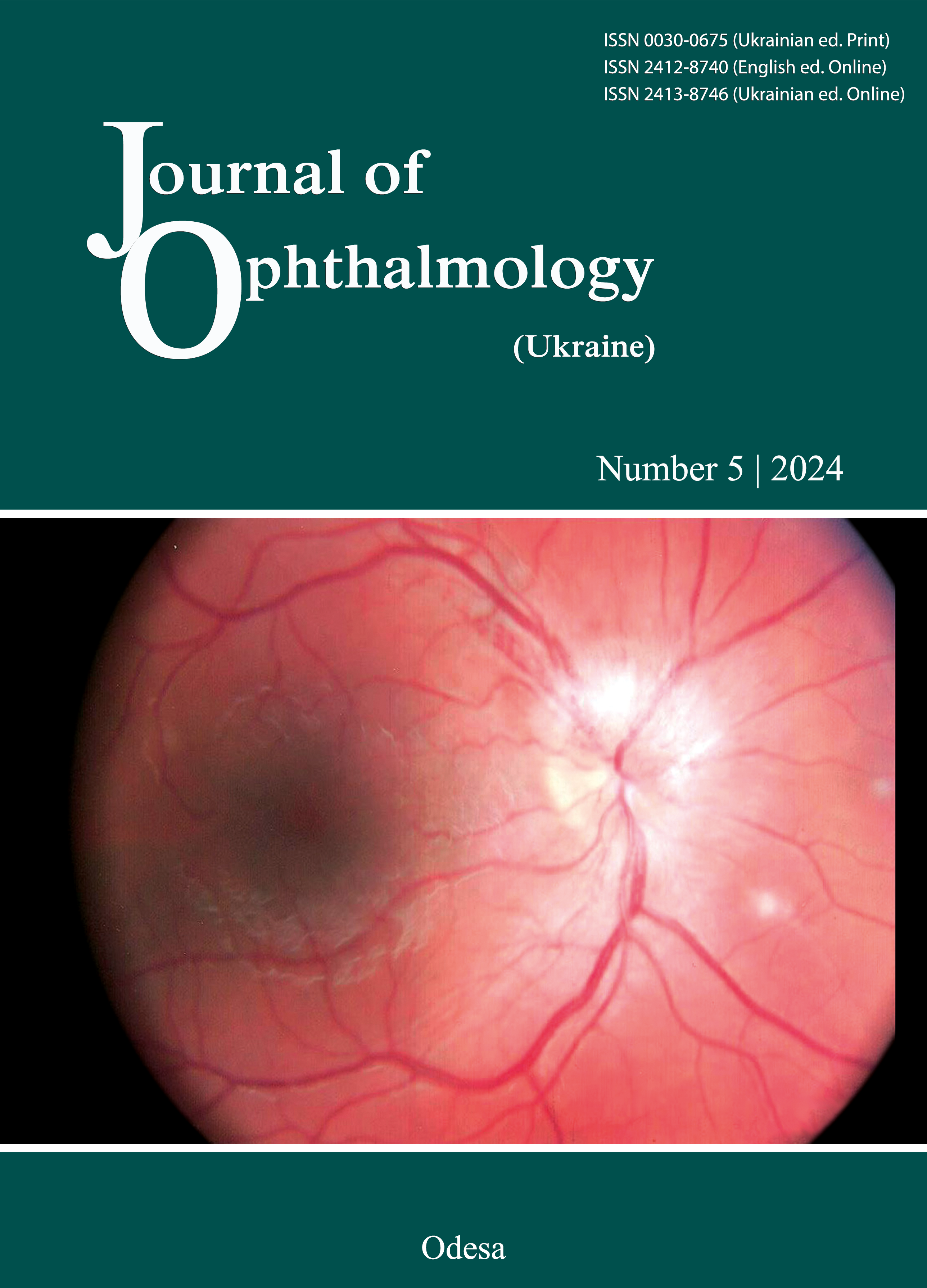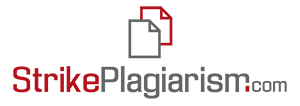Psychological and neuropsychological status of patients with both blast-related ocular injury and mild traumatic brain injury late after the traumatic event
DOI:
https://doi.org/10.31288/oftalmolzh202452126Keywords:
blast-related ocular injury, mild traumatic brain injury, neuropsychology, clinical psychology, post-traumatic stress disorderAbstract
Purpose: To determine the psychological and neuropsychological status of patients with both blast-related ocular injury and mild traumatic brain injury (TBI) late after the traumatic event.
Material and Methods: Thirty patients with blast-related ocular injury, reduced visual function and comorbid mild TBI were included in the study. The following methods of psychological and neuropsychological assessment were used: formalized interview; Suicidality, Post-traumatic Stress Disorder (PTSD), Alcohol Dependence, and Drug Dependence scales of the Mini-International Neuropsychiatric Interview (MINI); Raven’s Progressive Matrix scale; Personal and Social Performance (PSP) scale; PROMIS® Pain-Interference scale; Hospital Anxiety and Depression Scale (HADS); Mazes subtest of the Neuropsychological Assessment Battery (NAB); and Repeatable Battery for the Assessment of Neuropsychological Status (RBANS).
Results: The following significant correlations were found: PSP functioning and support from the family (r = 0.533, p = 0.002); total RBANS score and Mazes subtest score (r = 0.466, p = 0.009); total RBANS score and self-reported stress score (negative correlation, r = -0.492, p = 0.006); HADS depression and self-reported stress score (r = 0.646, p = 0.000114); PROMIS pain scale and PTSD scale (r = 0.482, p = 0.007). No association was found between the number of mild TBI events experienced and neuropsychological and psychological measurements.
Conclusion: Blast-related mild TBI concomitant with ocular injury has a substantial and long-term impact on casualty’s cognitive and psychological functions. In such patients, the most prominent cognitive deficits occur in the domain of executive function (including cognitive control and planning and problem-solving skills). In the presence of reduced visual function, these deficits have a substantial impact on total cognitive scores, scores of other psychic functions (namely, attention and memory) and significantly affect the patient’s capacity for independent functioning.
References
Belding J, Khokhar B, Englert R, Fitzmaurice S, Thomsen C. The Persistence of Blast- Versus Impact-Induced Concussion Symptomology Following Deployment. J Head Trauma Rehabil. 2021;36. https://doi.org/10.1097/HTR.0000000000000715
Phipps H, Mondello S, Wilson A, Dittmer T, Rohde N, Schroeder P, et al. Characteristics and Impact of U.S. Military Blast-Related Mild Traumatic Brain Injury: A Systematic Review. Front Neurol. 2020;11:559318. https://doi.org/10.3389/fneur.2020.559318
MacDonald C, Johnson A, Nelson E, Werner N, Fang R, Flaherty S, Brody D. Functional status after blast-plus-impact complex concussive traumatic brain injury in evacuated United States military personnel. J Neurotrauma. 2014;31(10):889-98. https://doi.org/10.1089/neu.2013.3173
McInnes K, Friesen C, MacKenzie D, Westwood D, Boe S. Mild Traumatic Brain Injury (mTBI) and chronic cognitive impairment: A scoping review. PLoS One. 2017;12. https://doi.org/10.1371/journal.pone.0174847
Abdryahymov R. Rationale, content, efficacy of psycho-correction of post-traumatic syndrome in combatants with partial vision loss due to combat trauma. Fundamental and applied researches in practice of leading scientific schools. 2019. https://doi.org/10.33531/farplss.2019.3.08
Goodrich G, Martinsen G, Flyg H, Kirby J, Garvert D, Tyler C. Visual function, traumatic brain injury, and posttraumatic stress disorder. J Rehabil Res Dev. 2014;51(4):547-58. https://doi.org/10.1682/JRRD.2013.02.0049
Keys J, Dempster M, Jackson J, Williams M, Coyle S. The psychosocial impact of losing an eye through traumatic injury and living with prosthetic restoration: A thematic analysis. Acta Psychol (Amst). 2021;219:103383. https://doi.org/10.1016/j.actpsy.2021.103383
Gu W, Groves LL, McClellan SF. Patterns of concomitant traumatic brain injury and ocular trauma in US service members. Trauma Surg Acute Care Open. 2024 Mar 12;9(1):e001313. https://doi.org/10.1136/tsaco-2023-001313
Flor R, Purt B, Sia RK, Ryan DS, Kagemann JM, Powell BE, French LM, Beydoun H, Justin GA, Colyer MH. Correlative Factors for Traumatic Brain Injury in Combat Ocular Trauma. Mil Med. 2022 Mar 9:usac010. https://doi.org/10.1093/milmed/usac010
Management of Concussion/mTBI Working Group. VA/DoD Clinical Practice Guideline for Management of Concussion/Mild Traumatic Brain Injury. J Rehabil Res Dev. 2009;46(6):CP1-68.
Pieramici DJ, Sternberg P Jr, Aaberg TM Sretal. A system for classifying mechanical injuries of the eye (globe). The Ocular Trauma Classification Group. Am J Ophthalmol. 1997;123(6):820-831. https://doi.org/10.1016/S0002-9394(14)71132-8
Sheehan D, Lecrubier Y, Sheehan K, Amorim P, Janavs J, Weiller E, et al. The Mini-International Neuropsychiatric Interview (M.I.N.I.): the development and validation of a structured diagnostic psychiatric interview for DSM-IV and ICD-10. The Journal of clinical psychiatry, 1998;59 Suppl 20:22-33;quiz 34-57.
Ministry of Health of Ukraine order dated 13 December 2024, No. 2118 "On psychosocial assistance to the population".
Rabinowitz J, Opler M, Rabinowitz A, Negash S, Anderson A, Fu D, et al. Consistency checks to improve measurement with the Personal and Social Performance Scale (PSP). Schizophrenia Research. 2020; 228: 529-533. https://doi.org/10.1016/j.schres.2020.11.040
Chen C, Kroenke K, Stump T, Kean J, Krebs E, Bair M, et al. Comparative Responsiveness of the PROMIS Pain Interference Short Forms With Legacy Pain Measures: Results From Three Randomized Clinical Trials. The journal of pain: official journal of the American Pain Society. 2019; 20(6): 664-675 . https://doi.org/10.1016/j.jpain.2018.11.010
Bjelland I, Dahl A, Haug T, Neckelmann D. The validity of the Hospital Anxiety and Depression Scale. An updated literature review. Journal of psychosomatic research. 2002; 52(2): 69-77. https://doi.org/10.1016/S0022-3999(01)00296-3
Agaiev NA, Kokun OM, Pishko IO, Lozinska NS, Ostapchuk VV, Tkachenko VV. [Collection of methodical procedures for assessment of negative psychic conditions in military personnel: A methodical guide]. Kyiv: Humanitarian Research Center of the Armed Forces of Ukraine; 2-16. Ukrainian.
Donders J, Levitt T. Criterion validity of the Neuropsychological Assessment Battery after traumatic brain injury. Arch Clin Neuropsychol. 2012;27(4):440-445. https://doi.org/10.1093/arclin/acs043
McKay C, Wertheimer J, Fichtenberg N, Casey J. The Repeatable Battery for the Assessment of Neuropsychological Status (RBANS): Clinical utility in a traumatic brain injury sample. Clin Neuropsychol. 2008;22:228-241. https://doi.org/10.1080/13854040701260370
Karr J, Areshenkoff C, Duggan E, Garcia-Barrera M. Blast-Related Mild Traumatic Brain Injury: A Bayesian Random-Effects Meta-Analysis on the Cognitive Outcomes of Concussion among Military Personnel. Neuropsychol Rev. 2014;24:428-444. https://doi.org/10.1007/s11065-014-9271-8
Bogdanova Y, Verfaellie M. Cognitive Sequelae of Blast-Induced Traumatic Brain Injury: Recovery and Rehabilitation. Neuropsychol Rev. 2012;22:4-20. https://doi.org/10.1007/s11065-012-9192-3
Downloads
Published
How to Cite
Issue
Section
License
Copyright (c) 2024 Bakuridze N. G., Lunov V. Ie., Ulianov V. O., Ulianova N. A.

This work is licensed under a Creative Commons Attribution 4.0 International License.
This work is licensed under a Creative Commons Attribution 4.0 International (CC BY 4.0) that allows users to read, download, copy, distribute, print, search, or link to the full texts of the articles, or use them for any other lawful purpose, without asking prior permission from the publisher or the author as long as they cite the source.
COPYRIGHT NOTICE
Authors who publish in this journal agree to the following terms:
- Authors hold copyright immediately after publication of their works and retain publishing rights without any restrictions.
- The copyright commencement date complies the publication date of the issue, where the article is included in.
DEPOSIT POLICY
- Authors are permitted and encouraged to post their work online (e.g., in institutional repositories or on their website) during the editorial process, as it can lead to productive exchanges, as well as earlier and greater citation of published work.
- Authors are able to enter into separate, additional contractual arrangements for the non-exclusive distribution of the journal's published version of the work with an acknowledgement of its initial publication in this journal.
- Post-print (post-refereeing manuscript version) and publisher's PDF-version self-archiving is allowed.
- Archiving the pre-print (pre-refereeing manuscript version) not allowed.












